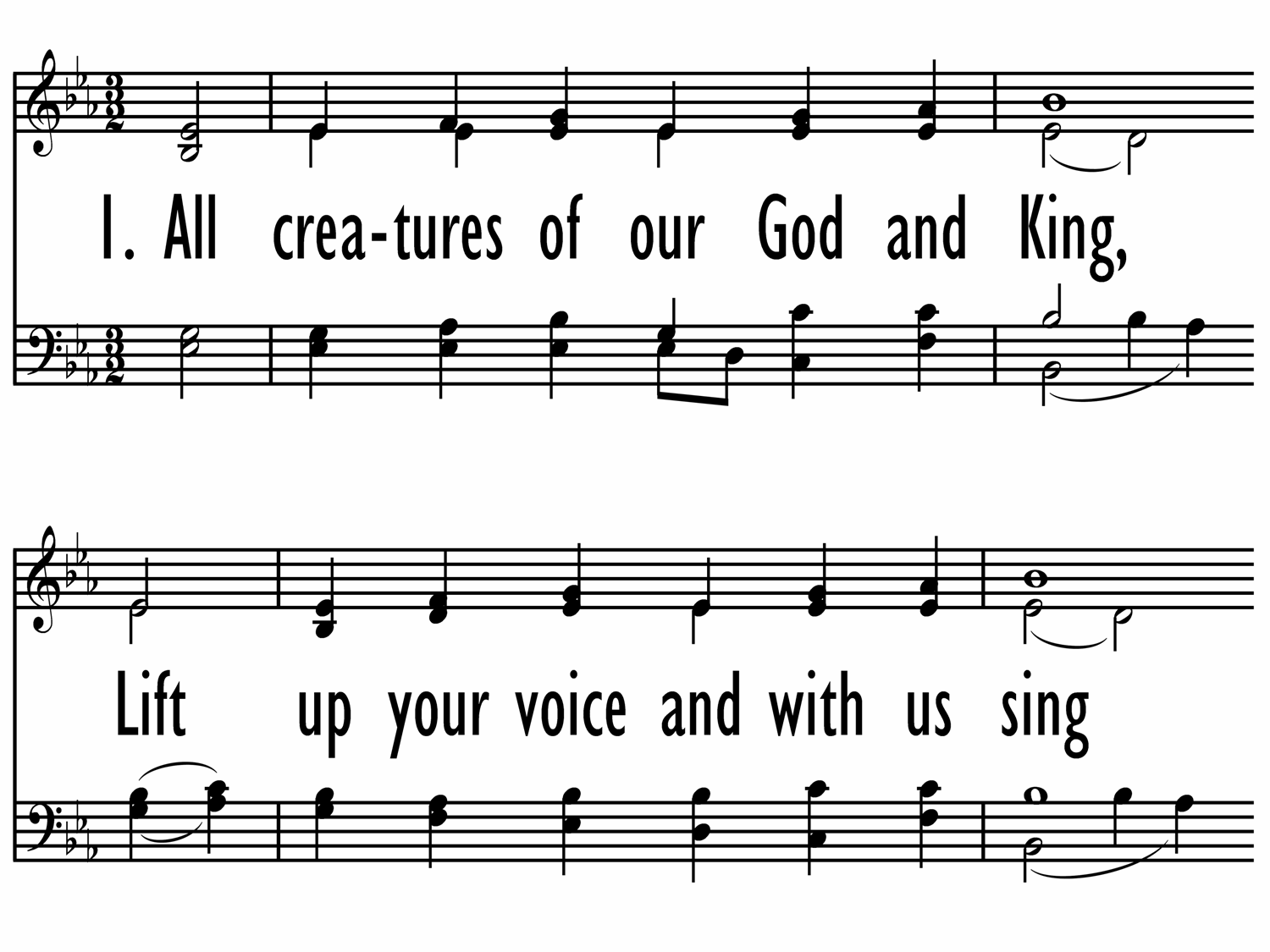- |
User Links
This Holy Covenant Was made
Hymn Information
- First Line
- This holy covenant was made
- Author
- Sylvia Dunstan, 1955-1993
- Tune Name
- LASST UNS ERFREUEN
- Adapter and Harmonizer
- Ralph Vaughan Williams (1906)
- Tune Source
- <cite>Auserlesen Catholische Geistliche Kirchengesänge</cite>, Cologne, 1623
- Topic
- Biblical Names and Places: Escape from Egypt · Biblical Names and Places: Manna · Covenant Faithfulness · Discipleship · Exile and Return · Trinity · Elements of Worship: Lord's Supper
Copyright Information
- Text Copyright
- © 1991 GIA Publications, Inc.
- Tune Copyright
- Public Domain
- Reprint/Projection Information
- Words: Permitted with a license from OneLicense.net. If you do not own this license, please contact the copyright holder for permission.
- Music: The Music is in the Public Domain; you do not need permission to project or reprint the Music.
Scripture References
- · · · · · ·
Further Reflections on Scripture References
This text reminds us initially of the Mosaic covenant with God’s Old Testament people: the Exodus and wilderness wandering (st. 1). God’s covenant with his New Testament people is focused in the Lord’s Supper (st. 2) and sealed by the work of the Holy Spirit (st. 3). At times cryptic in its biblical allusions, this hymn text calls not only for singing but also for further study of the meaning of these Scriptural references and preaching on the Mosaic covenant and God’s new covenant – now not written on stone but “on the minds and hearts of his people.”
Confessions and Statements of Faith References
Further Reflections on Confessions and Statements of Faith References
Stanza 2 speaks of the upper room where Christ and the disciples were gathered around the table. Heidelberg Catechism, Lord’s Day 28, Question and Answer 77 includes these words of institution from this occasion as the foundation for the sacrament.
In baptism, our identity is established and we are “set apart from all other people and alien religions, that we may wholly belong to [Christ] whose mark and sign we bear” (Belgic Confession, Article 34). Heidelberg Catechism, Lord’s Day 26, Question and Answer 70 assures us that “to be washed with Christ’s Spirit means that the Holy Spirit has renewed and sanctified us to be members of Christ…” We therefore are called “to join and unite with it [the church of Christ]” (Belgic Confession, Article 28). This union with Christ shapes our personal identity for all time.
This Holy Covenant Was made
Confession
But our hands reach elsewhere.
But our eyes look elsewhere.
But our ears listen elsewhere.
So we confess our sin and seek your gracious forgiveness
through Jesus Christ our Lord. Amen.
Additional Prayers
So we are clothed with compassion, kindness, and humility.
So we are clothed with gentleness, patience, and forbearance.
So we are clothed with forgiveness, love, and peace.
So give us energy, gracious God, to grow into our clothes. Amen.
This Holy Covenant Was made
Tune Information
- Name
- LASST UNS ERFREUEN
- Key
- D Major
- Meter
- 8.8.4.4.8.8 with alleluias
Recordings
This Holy Covenant Was made
Hymn Story/Background
Author Information
Her bachelor degree was earned from York University, and she received graduate degrees in theology and divinity from Emmanuel College, Toronto. In 1980, she was ordained by the Hamilton Conference of the United Church of Canada. During her career she served as a minister, a prison chaplain, and editor of a Canadian worship resource journal, Gathering.
In the summer of 1990, she was invited to lead the annual conference of the Hymn Society in the U.S. and Canada in a session exploring her hymnody. That exposure led to the publication of her texts In Search of Hope and Grace. A smaller collection Where the Promise Shines was published after her death in 1994. Many of her hymn texts have been set by contemporary composers.
Sylvia Dunstan died on July 25, 1993, almost four months after being diagnosed with liver cancer. She left behind a ministry that combined a compassionate concern for the needy and distraught with a consuming love of liturgy.


 My Starred Hymns
My Starred Hymns






